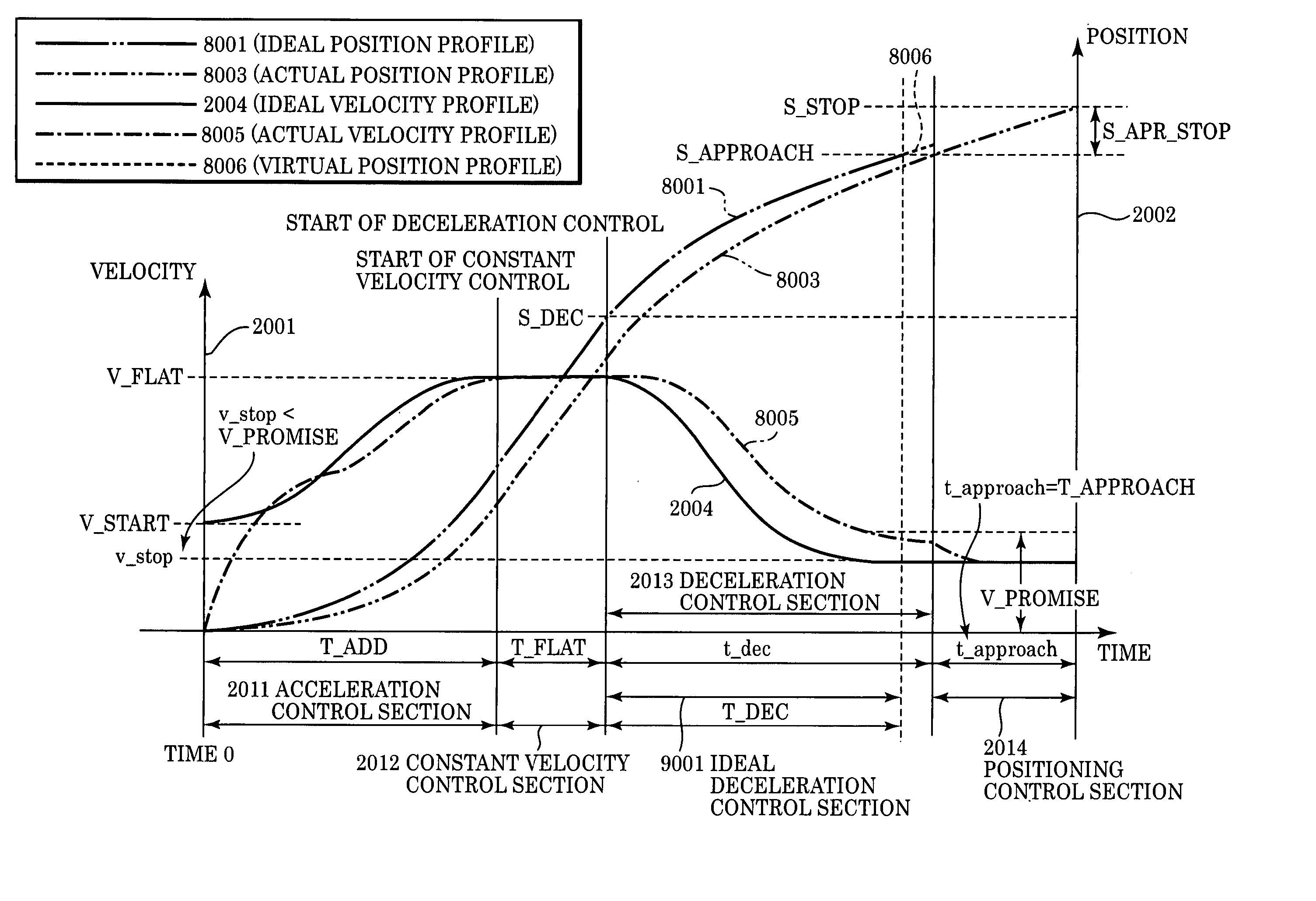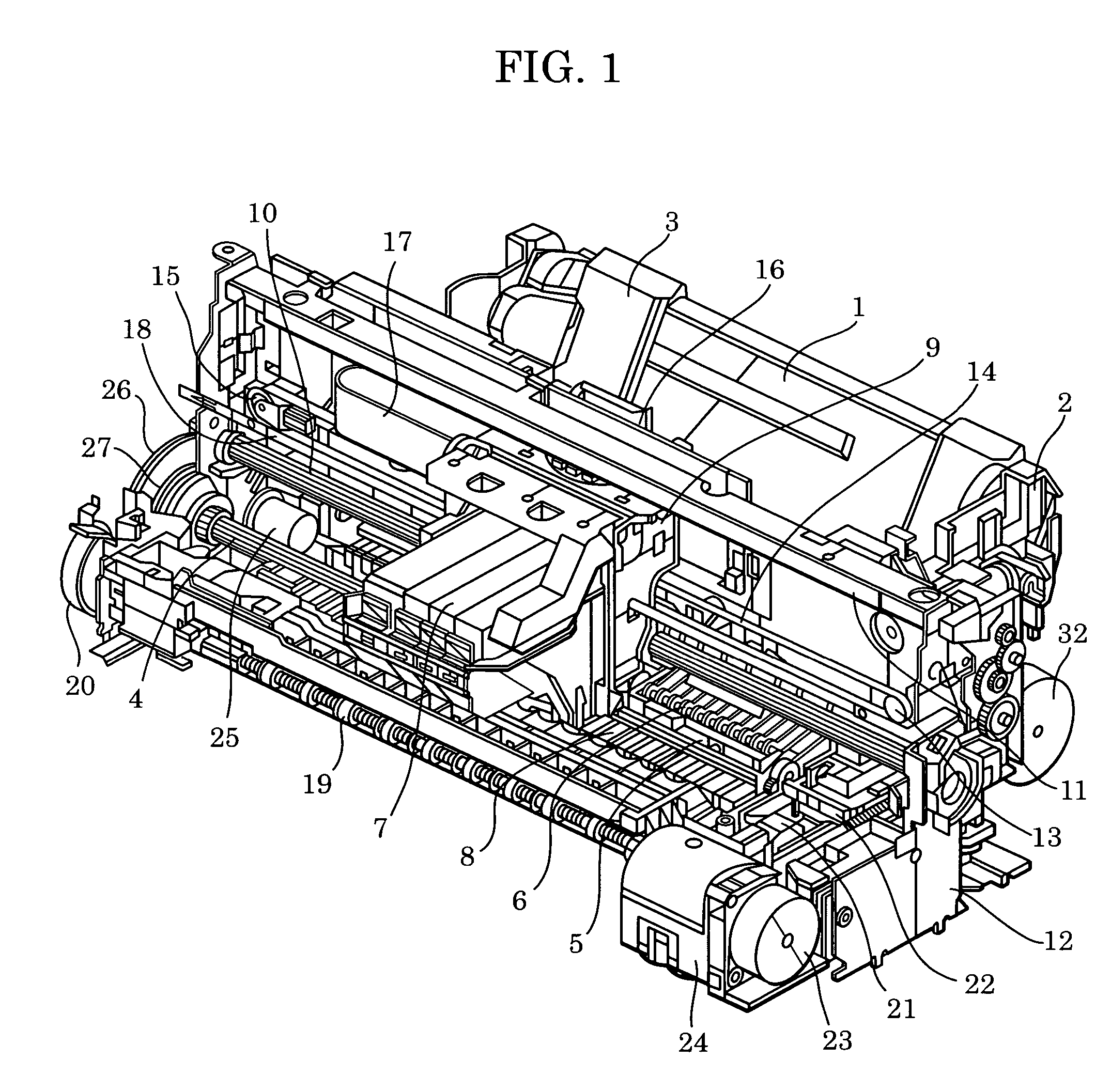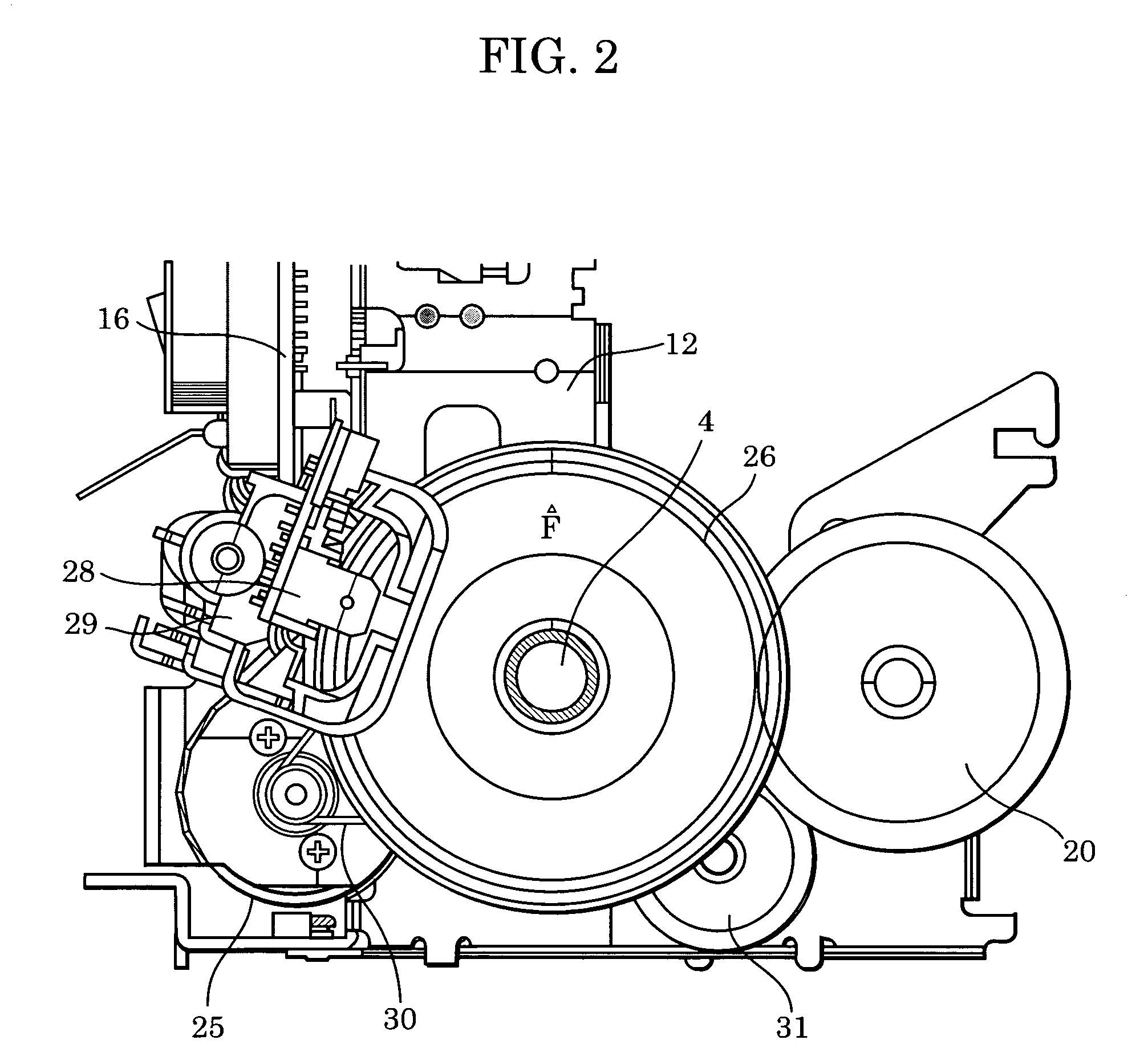Printer and paper feed controller
a controller and printer technology, applied in the field of printer and paper feed controller, can solve the problems of high-resolution encoder system used in industrial applications, unsuitable for general applications that need low-cost printers, difficult resolution improvement, etc., and achieve the effect of high feeding resolution
- Summary
- Abstract
- Description
- Claims
- Application Information
AI Technical Summary
Benefits of technology
Problems solved by technology
Method used
Image
Examples
first embodiment
[0040]FIG. 1 is a general perspective view of a printer, and FIG. 2 is a side view of a paper feeding system.
[0041]The printer includes an automatic document feeder, a paper transport mechanism, a paper ejection unit, a carriage unit, and a cleaning unit. The outline of each of these parts is described below.
(A) Automatic Document Feeder
[0042]The automatic document feeder includes a platen 1 on which to place a stack of paper P and a base 2 having a paper feed roller (not shown) for feeding paper P. A movable side guide 3 is movably disposed on the platen 1 so that the movable side guide 3 defines the position at which the stack of paper P is placed. The platen 1 is rotatable about a shaft connected to the base 2 and is urged against the paper feed roller by a platen spring (not shown).
[0043]Some sheets of paper P are fed by the driving force of a paper feed motor 32 to a nip part formed by the paper feed roller and a separation roller (not shown). The sheets of paper P are separate...
second embodiment
[0109]A second embodiment is described below with reference to FIG. 13C.
[0110]Herein, only different points from those of the first embodiment are described.
[0111]In this second embodiment, as shown in FIG. 13C, unlike the first embodiment, the stop operation is performed at a position (timing) that does not correspond to any edge of the encoder signal but that is determined by using a falling edge of phase B as a reference point, and a rising edge of phase A is used as E1 (assurance edge).
[0112]This operation mode is useful in particular when the calculation velocity has a large error and the stop operation is often performed at the assurance edge E1. In this operation mode, at a position (timing) corresponding to an edge of the encoder signal shown in FIG. 13B, the stop signal for the stop operation is output exactly at the edge (a rising edge of phase A). This makes it possible to minimize the difference in stop position accuracy between the on-edge stop operation mode and the no...
third embodiment
[0117]A third embodiment of the present invention is described below. A printer according to the third embodiment has a similar structure to that of the first embodiment, and thus a duplicated description of the structure is not given herein. The present embodiment is different from the first embodiment in terms of the following points.
[0118]In FIG. 12, 1200 shows an operation in a situation in which the actual velocity is equal to the velocity V0, and 1201 shows an operation in a situation in which the actual velocity is higher than the velocity V0. In the case of 1201, before the time calculated based on the velocity V0 has elapsed, the paper reaches the edge E1 appearing immediately after the target stop position (the result of step 1105 becomes YES).
[0119]When the paper reaches a position corresponding to the edge E1 after the target stop position is passed over, the stop operation is performed (step 1107) by changing the electric power supplied to the motor to a level that is o...
PUM
 Login to View More
Login to View More Abstract
Description
Claims
Application Information
 Login to View More
Login to View More - R&D
- Intellectual Property
- Life Sciences
- Materials
- Tech Scout
- Unparalleled Data Quality
- Higher Quality Content
- 60% Fewer Hallucinations
Browse by: Latest US Patents, China's latest patents, Technical Efficacy Thesaurus, Application Domain, Technology Topic, Popular Technical Reports.
© 2025 PatSnap. All rights reserved.Legal|Privacy policy|Modern Slavery Act Transparency Statement|Sitemap|About US| Contact US: help@patsnap.com



